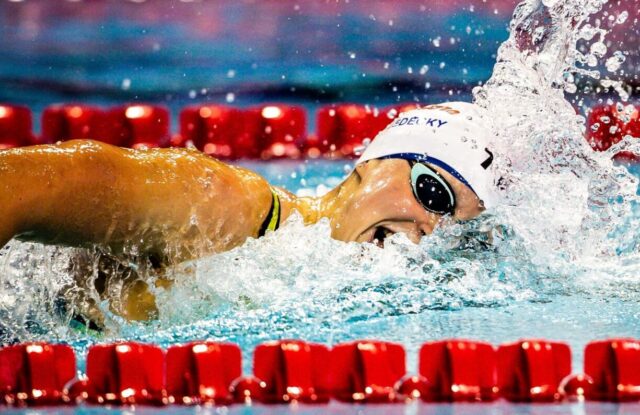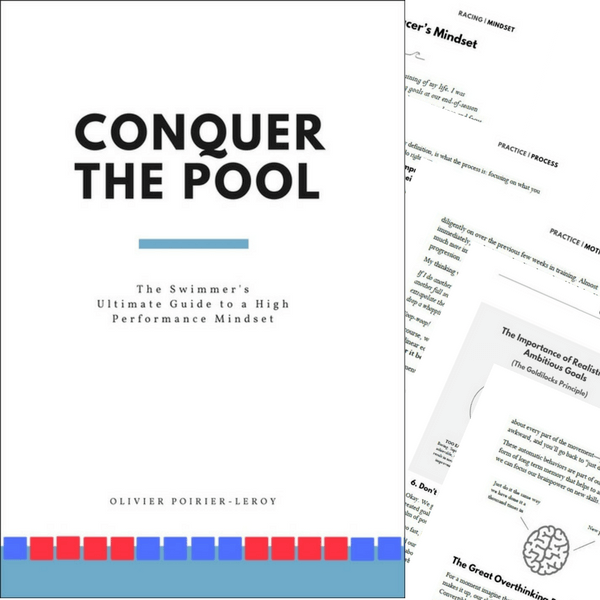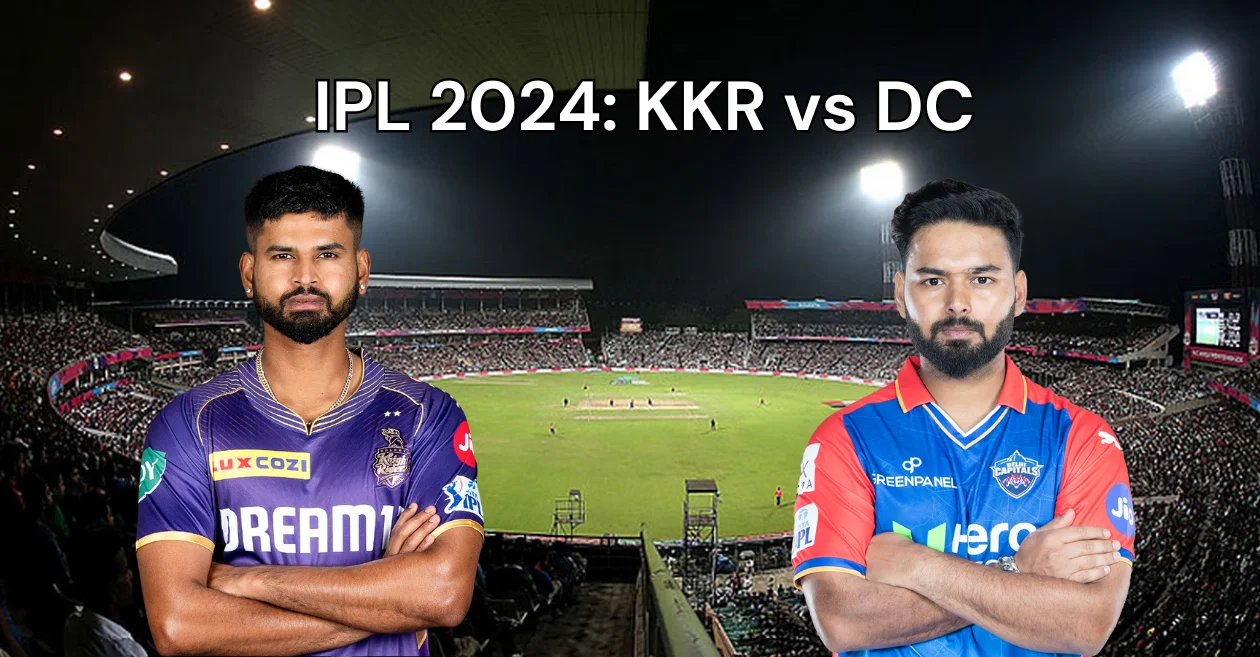By Olivier Poirier-Leroy on SwimSwam

Looking to up your speed in the pool? Stuck in a plateau in the water? Simply want to go fast? Here is a look at some of the best ways to get faster at swimming.
When it comes to getting faster at swimming, swimmers will go to some crazy lengths.
Whether it’s spending tons of money on expensive racing suits, smartwatches for swimming, or swim goggles with a heads-up display, there are plenty of things that swimmers will do to achieve faster times in the pool.
Ultimately, getting faster in the water, whether to bust through a pesky training plateau or to push the envelope with what’s possible in the pool, comes down to working smart.
This list of tips for how to swim faster at swimming includes focusing on technique, using proven training methodologies, and developing swim-specific strength.
By the end, you will have a full set of actionable tips to take to the pool today to get the most from your swimming workouts.
Tips for Getting Faster at Swimming
Here are nine actionable tips that will help you become a faster swimmer:
- Focus on technique.
- Train with intervals.
- Improve the feel of the water.
- Count your strokes.
- Use drills.
- Streamline.
- Core exercises.
- Resisted swim training.
- Swim fast!
Let’s look at each tip for faster swimming in more detail.
1. Focus on technique.
The key to swimming fast in the water starts with swimming with excellent technique.
If you look at the fastest swimmers in the water, whether it’s that Masters star at the local lap swim or when watching the fastest swimmers on the planet speed across Olympic-sized swim pools, they always make it easy.
To swim faster, aim to swim with a high body position, work that early catch in the pull, and focus on “easy speed” in the water.
While there are plenty of other ways to get fast in the water, including using swim aids like a kickboard, swim paddles, or a swim parachute, ultimately, they are only as effective as your technique.
Excellent technique is the foundation for swimming faster, so emphasize proper technique each time you dive into the pool.
2. Train with intervals.
Swimming is a low-impact form of exercise that can be done for long, unbroken periods of time.
But if you are trying to get faster in the water, breaking the longer distances into shorter intervals can increase overall speed, encourage smarter technique, and even give you a better workout.
Instead of swimming 3,000m straight, break it up into 30x100s or 6x500s.
The shorter intervals increase average speed, and the short rest between intervals promotes better overall technique.
Despite breaking up the long swim into shorter repetitions, the effort exerted is higher.
A study published in the Canadian Journal of Applied Physiology took a group of experienced cyclists and split them between performing 30 minutes straight on the bike or 2×15 minute long intervals.
The “long interval” group had significantly higher lactate concentrations and increased excess post-exercise oxygen consumption. They also averaged a faster overall speed.
Getting faster in the pool requires swimming faster, more often. Break up the long swim practices with faster-paced intervals.
3. Improve the feel of the water.
Swimmers often talk about that mythical “feel for the water.”
It’s those often-fleeting moments where your hands catch more water, your body glides faster through the water, and moving quickly across the pool feels almost effortless.
How do you improve your feel for the water to swim faster?
Well, swimming with proper technique is obvious. But there are also some “water sensitivity” drills that you can use in the pool to develop a heightened sensitivity to the water’s flow and resistance.
Here are two of my favorites:
- Sculling – Sculling is a swimming drill that involves moving the hands and forearms back and forth, enhancing the feel of the water. It’s also great for targeting specific parts of the stroke where your hand may be slipping through the water and not grabbing as much water as you’d like.
- Closed-fist swimming – Yes, it will look like you are punching at the water, and lane-mates may instinctively want to give you space, but swimming with your fists closed forces you to rely on the forearms and reduced surface area of the hand to catch the water. Try swimming half a length with closed fists and then transition mid-length to regular swimming.
Improving your feel for the water will help you master the delicate relationship with the water, allowing you to catch and pull more water and, by extension, swim faster.
4. Count your strokes.
One of the best habits swimmers can develop during swim sessions is to count their strokes.
Counting your strokes encourages you to focus on each stroke cycle’s quality, efficiency, and distance.
Instead of mindlessly swimming through your lengths, you are focused intently on getting the most from each extension of the arm, each push-off, and each kicking motion.
When we perform wasted movements in the water, whether it’s an over-rotation of the hips, not extending the hand at the top of the pulling motion, or not streamlining like a torpedo, speed suffers.
This is especially true when swimmers get tired. Stroke length crashes, decreasing and becoming choppy and inefficient.
Counting your strokes is an excellent habit for faster and more efficient swimming.
5. Use drills to improve technique.
Faster swimming combines many important elements, including talent, genetics (height helps but isn’t a deal-breaker), nutrition, and recovery.
But there is nothing that can overcome bad swimming technique.
See also: 7 Tips for How to Improve Freestyle Stroke
Drills are a critical tool for every swimmer to improve their feel for the water, reduce muscle imbalances, help improve body position, hit that early vertical forearm, and just about every other technical element of your swim stroke.
Assess where there is room for improvement with your stroke, whether in the pull, body position, or kick, and choose from the wide range of swimming drills that can help you sharpen your swimming technique.
See also: 6 Freestyle Drills for Better Technique
6. Streamline like a champion.
When it comes to swimming fast, we typically think about increasing speed in terms of effort. Work harder. Swim longer. Full grunt-effort.
But swimming faster isn’t always about “more”—often, the biggest wins in the pool are when we think with a “less” mindset.
Streamlining in swimming is the best example of this. By maintaining a tighter streamline when pushing off or diving into the water, you reduce the drag and resistance created by the body. When pushing off the wall or diving into the water, swimmers move the fastest they ever will throughout the length.
So tighten up that streamline!
When pushing off, tuck your head so that it’s in line with your body.
A study titled “Analysis of the effect of swimmer’s head position on swimming performance using computational fluid dynamics” showed that a straight had position reduced frontal drag by 20%.
There aren’t many ways to get free speed in the water, but streamlining like a boss is one of them!
7. Improve core strength.
Enhancing core strength contributes to swimmers’ ability to achieve greater speed in the water.
It accomplishes this by ensuring balance and stability, enabling powerful movements of the extremities, and maintaining an optimal streamlined body position.
A study with Polish national-level swimmers found that a six-week core training protocol improved 50m time trial speeds compared to a control group.
Another paper published in the Journal of Strength Conditioning Research showed that a 12-week core training program increased swim speed and stroke efficiency.
The best core exercises for swimmers include planks, side planks, bird dog, dead bug, unilateral glute bridge, Pallof press, pot stirrers, and rollouts.
Best of all, incorporating core training into your swim routine doesn’t have to be time-consuming.
In the studies mentioned earlier, participants saw improved swimming performance by adding three weekly sessions, each lasting no more than 15 minutes.
8. Resisted swimming.
Resisted swimming, also known as loaded swimming, is implementing resistance tools that help swimmers build strength, improve technique, and exert more power. Which, as you can probably guess, will help you swim faster!
Resistance tools and equipment come in a few different forms.
Swim parachutes and DragSox are excellent options for the solo swimmer. Resistance tubing provides a gradual form of resistance. And power towers (also known as power racks)
The key with resistance swimming is to use it for short, power-focused efforts to maximize strength and power development.
Doing repetitions in swim training performing 15-25m with resistance with plenty of rest ensures that power output remains high and stroke mechanics remain efficient.
Here’s one of my favorite sets using a swim parachute that I use for helping improve body position in the water and build power:
- 6×25 freestyle swim with a medium parachute on 1:00 rest after each 25. Focus on swimming at around 90-95% effort and really focus on perfect technique and body position.
- Extra minute rest
- 50 freestyle swim fast, carrying over the technique and body position from the resisted reps.
Do this set for 2-4 rounds—depending on your current fitness levels—and you’ll reap the benefits of pairing short, high-power resistance swimming with maximal efforts.
End result: Faster, stronger swimming.
9. Go fast!
It seems painfully obvious, but you have to swim fast to become a fast swimmer!
It’s wild to me how often swimmers (and some coaches, ahem) will focus on doing tons of yardage at sub-maximal speed and then be surprised that the speed isn’t there when it matters most.
Swim fast regularly at the pool to… swim faster.
A super simple swim speed workout you can try is this set:
- 6×25 swim fast on 1:00 – Go all-out, count your strokes, and unleash a rooster-tail of kick behind you.
This simple set is great for increasing your baseline for speed and offers opportunities to teach your body how to go fast.
Swimming at top-end speeds, with plenty of rest to ensure maximum velocity, not only gets you to touch those high-end speeds, but you also learn how your body moves most efficiently when flying across the pool.
See also: 8 Best Swimming Workouts for Speed
“Learning” speed and the best body position can only be done by practice and repetition.
In the eternal words of Maverick and Goose from Top Gun, “I feel the need… the need for speed!”
Do this set several times per week and uncork some speed in the pool.
(H/T: Herbie Behm, coach at ASU, for posting this set on Twitter.)
Wrapping Things Up
There are fewer things more satisfying than hitting new, untapped speeds in the water.
Whether you are a casual lap swimmer simply looking to get a little faster, or an experienced swimmer wanting to see some new personal best times on the scoreboard, these tips for how to swim faster will help you shave time off your times in the water.
To get faster in swimming, use excellent technique, improve the way you move through the water, build some swim-specific strength in the pool, and unleash top-end speed more often.
Give them a try the next time you hit the water and swim faster than ever before.
Happy swimming!
Disclaimer: Remember, before kicking off a new swim workout regimen or engaging in vigorous exercise, it’s always wise to consult with a healthcare professional to ensure it’s the right fit for you.
ABOUT OLIVIER POIRIER-LEROY
Olivier Poirier-Leroy is a former national-level swimmer. He’s the publisher of YourSwimBook, a ten-month logbook for competitive swimmers.
 He’s also the author of the recently published mental training workbook for competitive swimmers, Conquer the Pool: The Swimmer’s Ultimate Guide to a High-Performance Mindset.
He’s also the author of the recently published mental training workbook for competitive swimmers, Conquer the Pool: The Swimmer’s Ultimate Guide to a High-Performance Mindset.
It combines sport psychology research, worksheets, anecdotes, and examples of Olympians past and present to give swimmers everything they need to conquer the mental side of the sport.
Ready to take your mindset to the next level?
Click here to learn more about Conquer the Pool.



















You must be logged in to post a comment Login